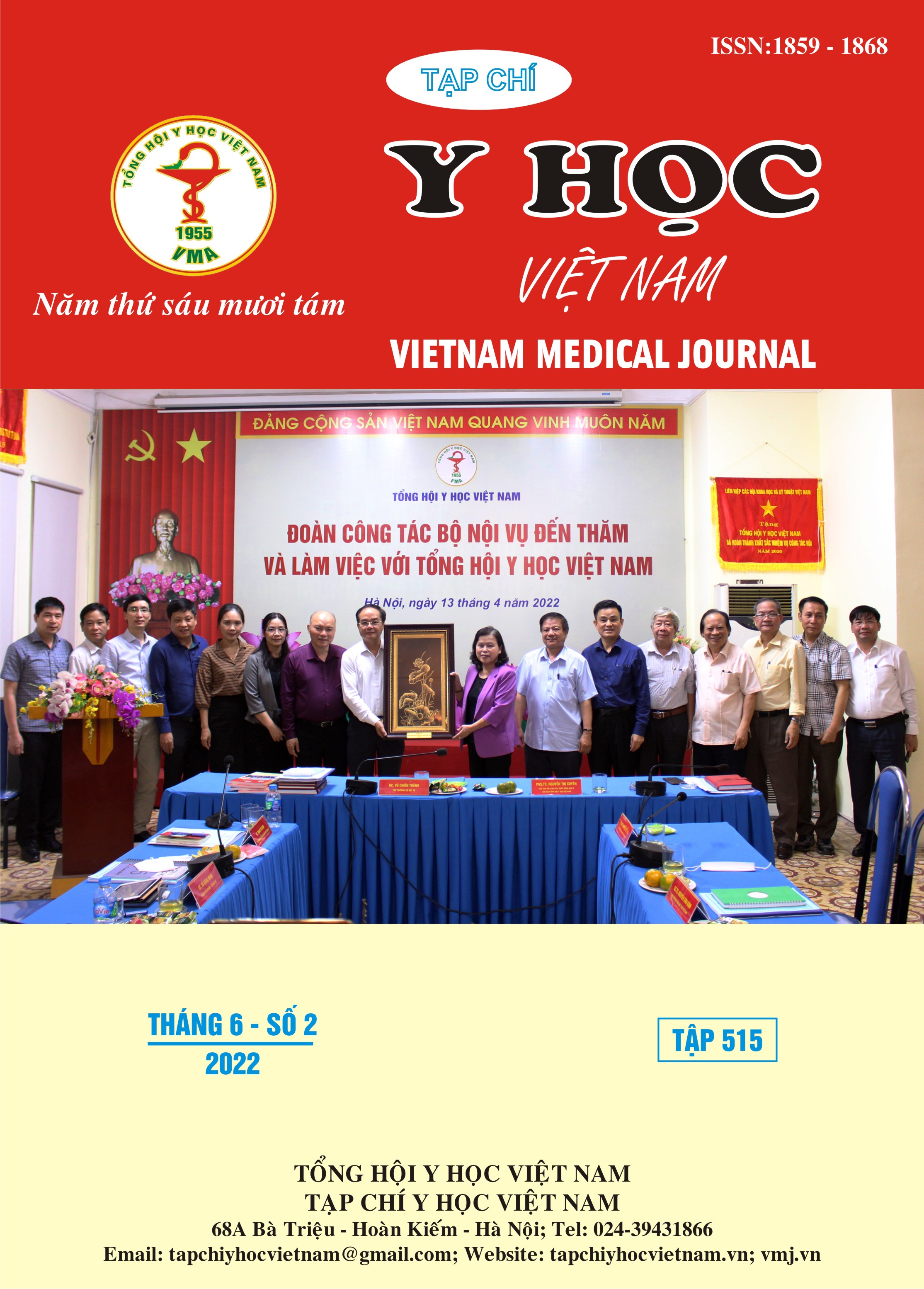SUMMARY SURVEY ON THE PROPORTION OF SOME MANIFESTATIONS OF EYE DAMAGE IN TYPE 2 DIABETES PATIENTS
Main Article Content
Abstract
Objective: To survey on the proportion of some manifestations of eye damage in type 2 diabetes patients. Subject and method: 395 type 2 diabetes patients treated at the National Hospital of Endocrinology were surveyed for some manifestations of eye damage based on clinical symptoms and ophthalmoscopy. Patients who did not received ophthalmoscopy such as moderate to severe cataracts were excluded from the study population. Ophthalmoscopy to identify clinical symptoms and lesions performed by an ophthalmologist at Military Hospital 103. Results: The propotion of diabetic retinopathy was 45,8%, mainly non-proliferative retinopathy (90,6%), distributed in all 3 levels: mild, moderate and severe, in which mild level accounts for the highest proportion (43,9%). During ophthalmoscopy, many lesions were detected, including some common manifestations with a high rate such as microaneurysms (42,3%), hard exudate (22,5%), intra-retinal hemorrhage (22,0%). Cataracts were encountered with a high rate (73,4%), in which the nucleus opacity accounted for the highest rate (47,05%) followed by the cortical region (25,69%), mixed opacities (13,54 %), posterior capsular opacities accounted for the lowest rate (4,51%). Conclusion: In patients with type 2 diabetes, many eye lesions were detected, in which cataract and retinopathy were both encountered with a high rate. If there are no contraindications, ophthalmoscopy is still an easy method to perform and detect many lesions while still ensuring reliability.
Article Details
Keywords
Type 2 diabetes mellitus, diabetic retinopathy, cataracts
References
2. Viswanath K, Murray McGavin DD (2003), “Diabetic retinopathy: clinical findings and management”, Community Eye Health. 16(46), pp.21.
3. Gardner T. W, Jeffrey M Sundstrom (2017), “A proposal for early and personalized treatment of diabetic retinopathy based on clinical pathophysiology and molecular phenotýping”, Vision research. 139, pp.153-160.
4. Zheng Y, Mingguang He, Nathan Congdon (2012), “The worldwide epidemic of diabetic retinopathy”, Indian journal of ophthalmology. 60(5), pp.428.
5. Kempen J. H (2004), “The prevalence of diabetic retinopathy among adults in the United States”, Archives of ophthalmology. 122(4), pp.552-563.
6. Srinivasan S, Raman R, Swaminathan G, et al (2017). “Incidence, Progression, and Risk Factors for Cataract in type 2 diabetes”. IOVS, 58(13), pp.5921-5929.
7. Kim S.I, Kim S.J (2006). “Prevalence and Risk Factors for Cataracts in Persons with Type 2 Diabetes Mellitus”. Korean Journal of Ophthalmology, 20(4), pp.201-204.


